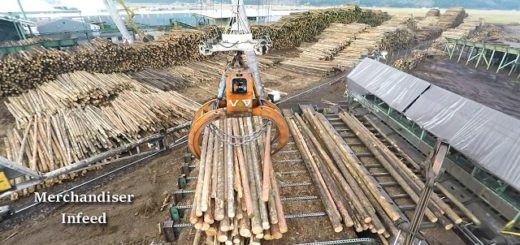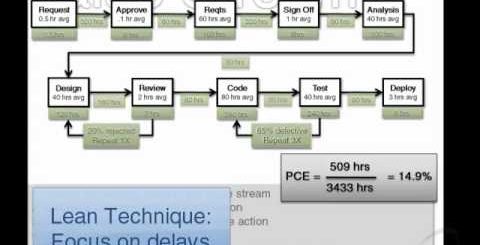Automation Changing Supply chain
Introduction
Automation is revolutionizing the way supply chains operate. Automation is allowing companies to streamline their processes, reduce costs, and increase efficiency. Automation is also helping to reduce errors, improve customer service, and increase visibility into the supply chain. Automation is changing the way companies manage their supply chains, from the way they source materials to the way they deliver products to customers. Automation is helping companies to become more agile and responsive to customer needs, while also reducing costs and improving efficiency. Automation is also helping to reduce the risk of supply chain disruptions, allowing companies to better manage their supply chains and ensure that their customers receive the products they need in a timely manner.
How Automation is Transforming the Supply Chain
Automation is transforming the supply chain in a variety of ways, from streamlining processes to improving accuracy and efficiency. Automation is helping to reduce costs, improve customer service, and increase the speed of delivery.
Automation is being used to streamline processes in the supply chain. Automation can be used to automate the ordering process, from the initial order to the delivery of the product. Automation can also be used to automate the tracking of orders, ensuring that orders are delivered on time and in the correct quantity. Automation can also be used to automate the inventory management process, ensuring that the right products are in stock and that the right products are being shipped to the right customers.
Automation is also helping to improve accuracy and efficiency in the supply chain. Automation can be used to automate the tracking of orders, ensuring that orders are delivered on time and in the correct quantity. Automation can also be used to automate the inventory management process, ensuring that the right products are in stock and that the right products are being shipped to the right customers. Automation can also be used to automate the tracking of shipments, ensuring that shipments are delivered on time and in the correct quantity.
Automation is also helping to reduce costs in the supply chain. Automation can be used to automate the ordering process, reducing the amount of time and money spent on manual order processing. Automation can also be used to automate the tracking of orders, reducing the amount of time and money spent on manual order tracking. Automation can also be used to automate the inventory management process, reducing the amount of time and money spent on manual inventory management.
Automation is also helping to improve customer service in the supply chain. Automation can be used to automate the tracking of orders, ensuring that orders are delivered on time and in the correct quantity. Automation can also be used to automate the inventory management process, ensuring that the right products are in stock and that the right products are being shipped to the right customers. Automation can also be used to automate the tracking of shipments, ensuring that shipments are delivered on time and in the correct quantity.
In conclusion, automation is transforming the supply chain in a variety of ways, from streamlining processes to improving accuracy and efficiency. Automation is helping to reduce costs, improve customer service, and increase the speed of delivery. Automation is an essential tool for any business looking to stay competitive in today’s market.
The Benefits of Automation in the Supply Chain
Automation in the supply chain has become increasingly important in recent years, as businesses strive to remain competitive in a rapidly changing global market. Automation offers a number of benefits that can help businesses improve their efficiency, reduce costs, and increase customer satisfaction.
One of the primary benefits of automation in the supply chain is improved efficiency. Automation can help streamline processes, reduce manual labor, and eliminate errors. Automated systems can also help businesses track inventory levels, monitor customer orders, and manage supply chain operations more effectively. This can help businesses reduce costs and improve customer service.
Automation can also help businesses reduce costs. Automated systems can help reduce labor costs by eliminating the need for manual labor. Automation can also help reduce the cost of materials, as automated systems can help businesses identify and purchase the most cost-effective materials. Automation can also help reduce the cost of shipping, as automated systems can help businesses identify the most cost-effective shipping methods.
Finally, automation can help businesses improve customer satisfaction. Automated systems can help businesses track customer orders and provide timely updates on order status. Automated systems can also help businesses provide accurate and timely delivery of products. This can help businesses build customer loyalty and increase customer satisfaction.
In conclusion, automation in the supply chain offers a number of benefits that can help businesses improve their efficiency, reduce costs, and increase customer satisfaction. Automation can help businesses streamline processes, reduce labor costs, and identify the most cost-effective materials and shipping methods. Automation can also help businesses track customer orders and provide timely updates on order status. By taking advantage of the benefits of automation in the supply chain, businesses can remain competitive in a rapidly changing global market.
Automation and the Future of Supply Chain Management
The future of supply chain management is closely linked to the development of automation technologies. Automation is transforming the way supply chains are managed, from the way goods are tracked and shipped to the way customer orders are fulfilled. Automation is making it easier for companies to manage their supply chains more efficiently and cost-effectively.
Automation is being used to streamline the supply chain process, from the initial order to the final delivery. Automated systems can track orders, monitor inventory levels, and provide real-time updates on the status of shipments. This allows companies to better manage their supply chains and ensure that orders are fulfilled on time and in full. Automation also helps to reduce costs associated with manual processes, such as labor costs and errors.
Automation is also being used to improve customer service. Automated systems can provide customers with real-time updates on their orders, allowing them to track their shipments and receive notifications when their orders have been shipped. This helps to improve customer satisfaction and loyalty.
In addition, automation is being used to improve the accuracy of forecasting and demand planning. Automated systems can analyze data from multiple sources to provide more accurate forecasts and demand plans. This helps companies to better manage their inventory levels and ensure that they have the right products in the right quantities at the right time.
Finally, automation is being used to improve the security of supply chains. Automated systems can monitor shipments and detect any suspicious activity, allowing companies to take action quickly to protect their supply chains.
The future of supply chain management is closely linked to the development of automation technologies. Automation is making it easier for companies to manage their supply chains more efficiently and cost-effectively, while also improving customer service and security. As automation technologies continue to evolve, the future of supply chain management looks bright.
Automation and the Impact on Logistics
Automation is having a profound impact on the logistics industry. Automation is the use of technology to automate processes, such as the movement of goods, inventory management, and customer service. Automation is transforming the way logistics companies operate, allowing them to become more efficient and cost-effective.
Automation is making it easier for logistics companies to track and manage their inventory. Automated systems can monitor inventory levels in real-time, allowing companies to quickly identify and address any shortages or overages. Automation also makes it easier to manage customer orders, as automated systems can quickly process orders and provide customers with accurate delivery estimates.
Automation is also making it easier for logistics companies to optimize their routes. Automated systems can analyze data such as traffic patterns, weather conditions, and customer locations to determine the most efficient route for a delivery. This helps to reduce fuel costs and delivery times, allowing companies to provide faster and more cost-effective services.
Finally, automation is making it easier for logistics companies to provide better customer service. Automated systems can quickly respond to customer inquiries, provide accurate delivery estimates, and track orders in real-time. This helps to improve customer satisfaction and loyalty, as customers can easily access the information they need.
Overall, automation is having a significant impact on the logistics industry. Automation is making it easier for companies to track and manage their inventory, optimize their routes, and provide better customer service. This is helping to make logistics companies more efficient and cost-effective, allowing them to provide faster and more reliable services.
Automation and the Role of Artificial Intelligence in Supply Chain Management
The automation of supply chain management (SCM) processes is becoming increasingly important in today’s competitive business environment. Automation can help companies reduce costs, improve efficiency, and increase customer satisfaction. Artificial intelligence (AI) is playing an increasingly important role in the automation of SCM processes. AI can be used to automate a wide range of tasks, from forecasting demand to optimizing inventory levels.
AI can be used to automate the forecasting of demand for products and services. AI algorithms can analyze historical data to identify patterns and trends in customer demand. This information can then be used to create accurate forecasts of future demand. AI can also be used to automate the optimization of inventory levels. AI algorithms can analyze data from multiple sources, such as sales data, customer feedback, and market trends, to determine the optimal inventory levels for a given product or service.
AI can also be used to automate the optimization of supply chain networks. AI algorithms can analyze data from multiple sources, such as customer demand, supplier availability, and transportation costs, to determine the most efficient supply chain network. AI can also be used to automate the optimization of logistics operations. AI algorithms can analyze data from multiple sources, such as customer demand, supplier availability, and transportation costs, to determine the most efficient routes and delivery schedules.
AI can also be used to automate the optimization of pricing strategies. AI algorithms can analyze data from multiple sources, such as customer demand, competitor pricing, and market trends, to determine the optimal pricing strategy for a given product or service. AI can also be used to automate the optimization of customer service operations. AI algorithms can analyze data from multiple sources, such as customer feedback, customer service logs, and customer satisfaction surveys, to determine the most effective customer service strategies.
In summary, AI is playing an increasingly important role in the automation of SCM processes. AI can be used to automate a wide range of tasks, from forecasting demand to optimizing inventory levels, supply chain networks, logistics operations, pricing strategies, and customer service operations. By leveraging AI, companies can reduce costs, improve efficiency, and increase customer satisfaction.
Automation and the Challenges of Implementing New Technologies in the Supply Chain
The supply chain is a complex system of processes that involve the movement of goods and services from the point of origin to the point of consumption. As technology advances, the supply chain is becoming increasingly automated, with new technologies being implemented to streamline processes and improve efficiency. However, the implementation of new technologies in the supply chain can be challenging, as there are a number of factors that must be taken into consideration.
One of the primary challenges of implementing new technologies in the supply chain is the cost. Automation requires significant investments in hardware, software, and personnel, and these costs can be prohibitive for many organizations. Additionally, the cost of maintaining and updating the technology must be taken into account, as well as the cost of training personnel to use the new technology.
Another challenge of implementing new technologies in the supply chain is the complexity of the system. Automation requires a high degree of integration between different systems, and this can be difficult to achieve. Additionally, the complexity of the system can lead to errors and delays, which can have a negative impact on the efficiency of the supply chain.
Finally, the implementation of new technologies in the supply chain can be hindered by resistance from personnel. Many employees may be reluctant to embrace new technologies, as they may feel that their jobs are being threatened. Additionally, they may be unfamiliar with the new technology and may require additional training to use it effectively.
In order to successfully implement new technologies in the supply chain, organizations must take into account the cost, complexity, and resistance to change. By carefully considering these factors, organizations can ensure that the implementation of new technologies is successful and that the supply chain is optimized for efficiency.
Conclusion
Automation is changing the supply chain in a variety of ways, from streamlining processes to increasing efficiency and accuracy. Automation is also helping to reduce costs, improve customer service, and increase visibility into the supply chain. Automation is an important tool for businesses to remain competitive in today’s market and to ensure that their supply chain is running smoothly and efficiently. Automation is here to stay and will continue to shape the future of the supply chain.
Automation Supply Chain Resources
- Amazon uses AI to deliver orders even faster.
- Deploying 2,000 Uber Eats delivery robots across US.
- Industry 4.0 Explained Simply
- Next-Generation Construction Robots SHOCKED Engineers.
- Smart Factory Automation That Shocked The World.
- Supply Chain Collaboration Resources on Social Media.
- Supply Chain Today.
- Top Quotes about AI, Automation and Robotics.
- What Is Robotic Process Automation (RPA)?







































